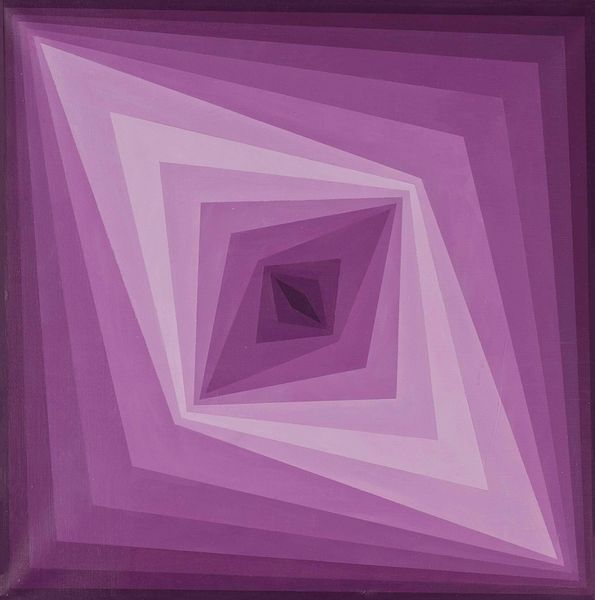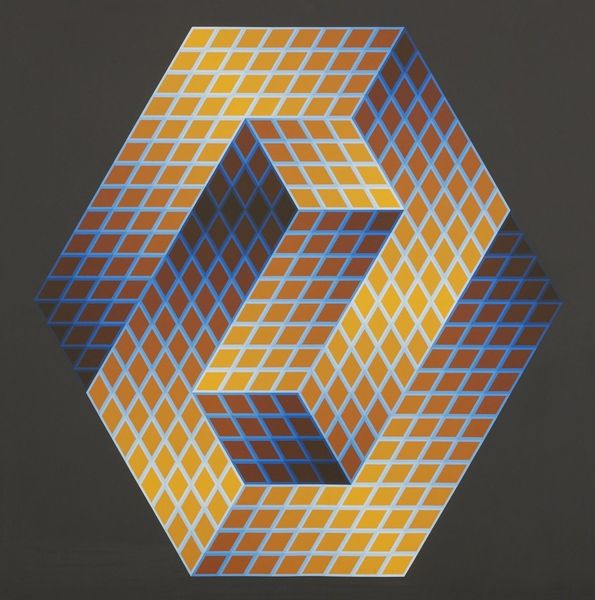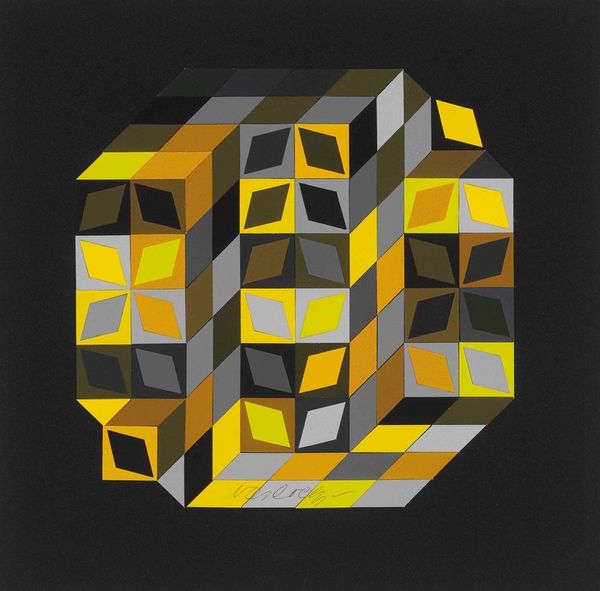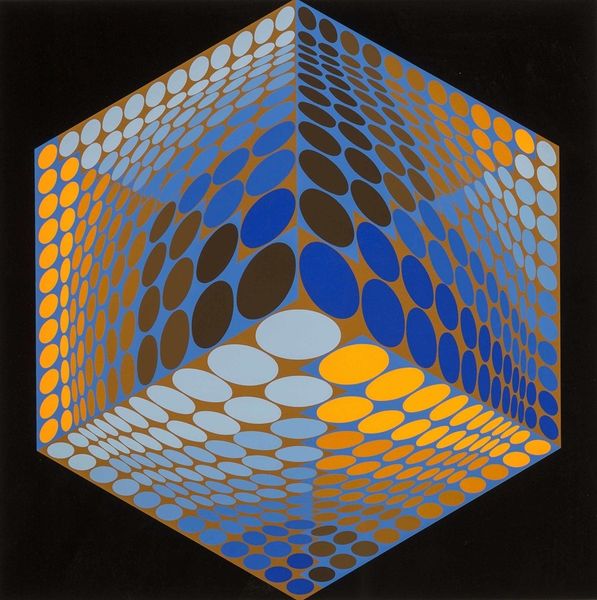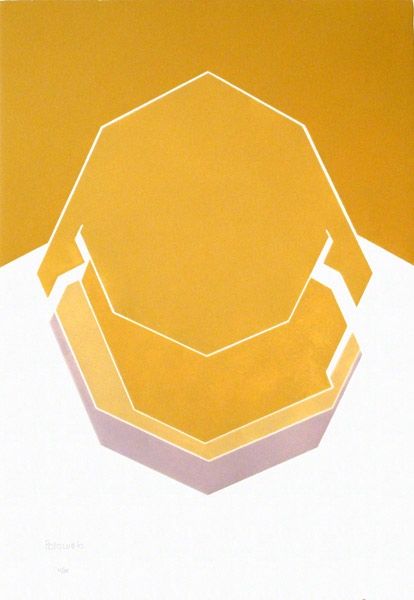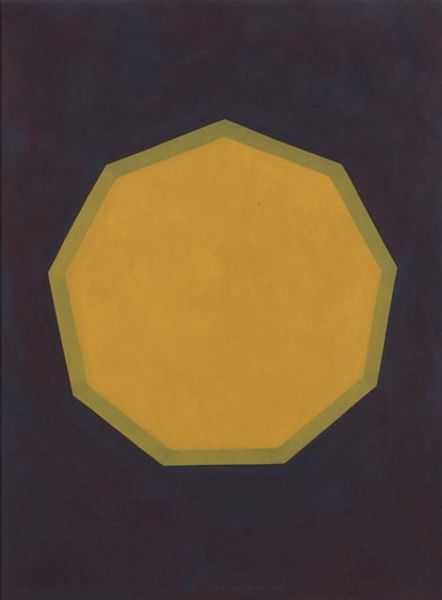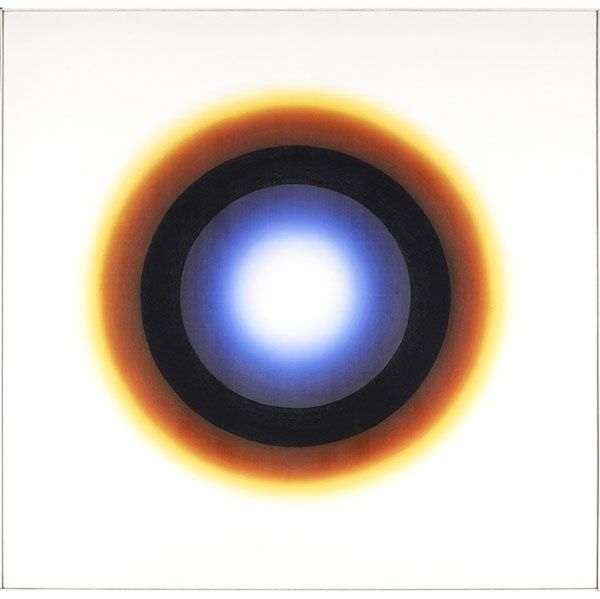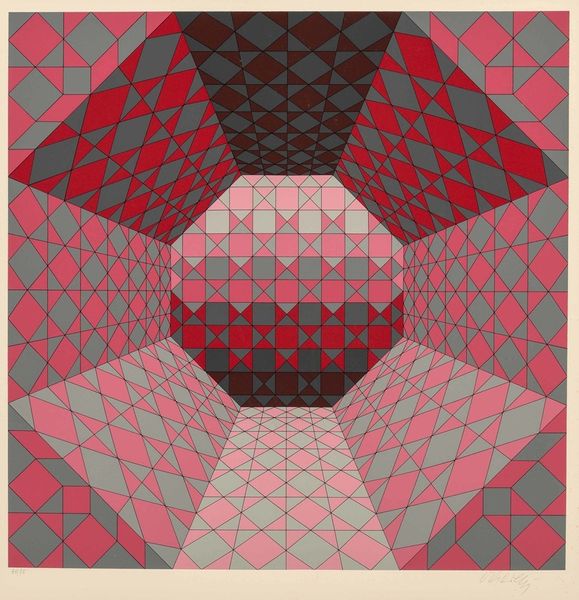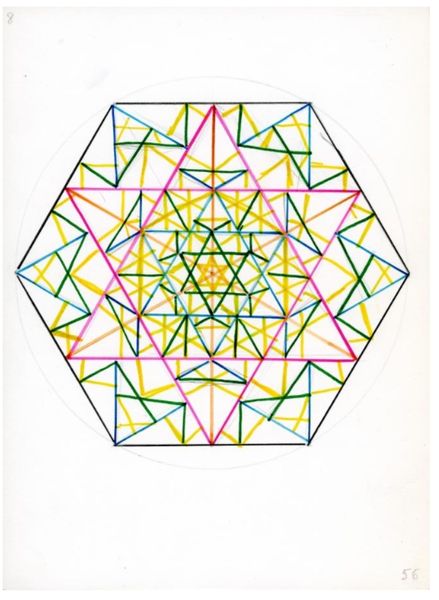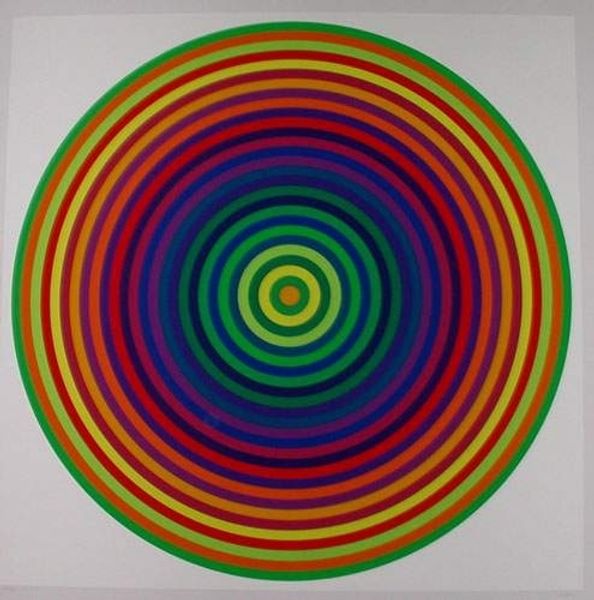
acrylic-paint
#
op-art
#
op art
#
acrylic-paint
#
abstract
#
geometric pattern
#
abstract pattern
#
repetitive shape and pattern
#
organic pattern
#
geometric-abstraction
#
repetition of pattern
#
vertical pattern
#
abstraction
#
pattern repetition
#
funky pattern
#
combined pattern
Copyright: Modern Artists: Artvee
Curator: Immediately, I feel pulled into some sort of infinite honey vortex. Is it just me, or does this thing hum with latent energy? Editor: Well, let's put some historical context around that honey vortex. What we're looking at is Victor Vasarely's "Paris-Tokyo #3," created in 1980. He crafted this hypnotic effect with acrylic paint. It's a prime example of Op Art from an artist fascinated by geometric abstraction. Curator: Fascinated is putting it mildly! It’s almost dizzying, like staring into the soul of a very organized beehive. I wonder what he was thinking about, what pushed him to reduce everything to these perfect, expanding hexagons. Editor: Vasarely was deeply influenced by the Bauhaus movement and sought to create art that was both accessible and democratic. His work challenged traditional notions of art by employing geometric forms to create optical illusions and vibrant visual experiences. This piece makes me think about the burgeoning computer age, where clean lines and seemingly infinite expansion took hold of the popular imagination. Curator: Yes! It does feel very digital, pre-digital even. But there’s something unsettling about its perfection. Each shade perfectly in place… Is it a celebration of order, or a warning about the hypnotic pull of repetition? It teeters on the edge, doesn't it? Like those utopian architectural visions that end up being totally dystopian. Editor: The 1960s and 70s were eras of intense political and social upheaval. While Pop Art grappled with consumer culture, Op Art, arguably, abstracted anxieties about control and conformity into disorienting patterns. Museums eagerly showcased these pieces as evidence of new technology’s possibilities—while carefully ignoring how many artists had questions about those promises. Curator: Well, regardless, it is effective. You cannot help but get a little bit lost staring at this. I think what resonates for me is how that initial sense of order crumbles the longer you gaze into it. Then it's not harmonious. It's infinite… almost menacingly so. Editor: It shows how even the most abstract forms carry traces of their time and place. Makes me wonder what an artist today would create to reflect *our* era of relentless repetition and technological hypnosis. Curator: Food for thought! Next time I see a honeycomb, I’ll be wary. And maybe pack some aspirin! Editor: Indeed. It certainly sticks with you.
Comments
No comments
Be the first to comment and join the conversation on the ultimate creative platform.
